Are You Getting Your Categories Right?
Which category your book is listed under can have a massive influence on how well your book sells, so it’s worth making sure you get it right. Understanding how Amazon organizes their virtual bookstore – and more importantly what factors they use to determine what goes where – can help increase your sales by making sure more of the right customers are seeing your book.
Before I write any author blogs, I’m always struck with a dilemma: Is what I’m going to write about too obvious? Does everybody know about it?
Normally, if I take the plunge and write the blog anyway, it all becomes worthwhile when I receive an email from a reader saying: “Thank you! I never knew that before.”
I face a similar dilemma with this blog post – which addresses the topic of categories. Categories are the silo your self-published book falls into in Amazon’s systems – your place on the digital bookshelves. Every book has them, and finding yourself in the right (or wrong) category can have a massive impact on the success (or failure) of your book. It seems such an obvious thing – but, then again, it’s not – and in a lot of occasions of me working with other authors, I see them missing an opportunity to make their books more visible by leveraging categories more effectively.
What are categories?
If you go to any book on Amazon and scroll down a little, you’ll see the top categories the book is listed under. For example, here is Harry Potter and the Sorcerer’s Stone – currently listed as the bestseller in Teen & Adult Family Fiction, Children’s Humorous Action & Adventure and Children’s Issues in School Books.
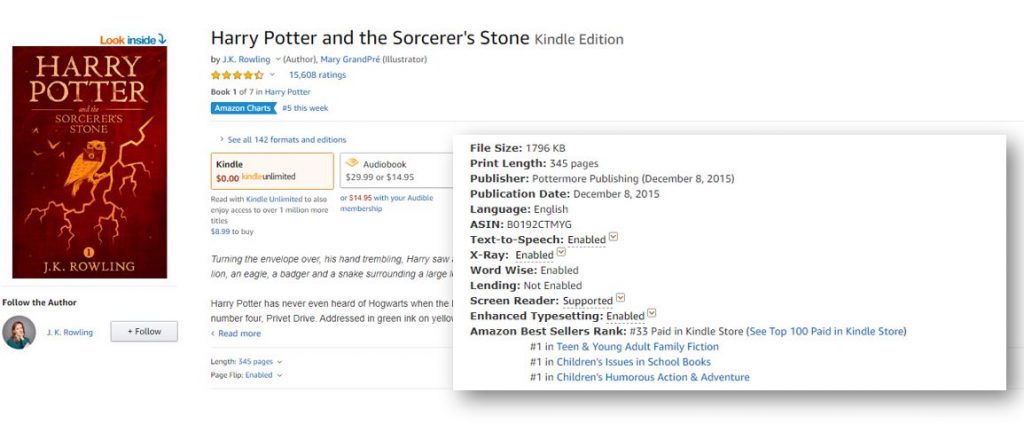
Of course, a book can exist in many categories but only 3 are shown by default. Amazon selected these for display purposes because this book is a #1 best-seller in each of these categories; but as a #33 best-seller overall (even decades after its release) you’ll also currently find Harry Potter and the Sorcerer’s Stone as #2 in Teen & Young Adult Literature & Fiction and #2 in Teen & Young Adult Books.
Now, why is this important? Well, the answer has a lot to do with how readers find books they want to buy on Amazon. A lot of readers will enter terms into the search box – but most readers actually browse Amazon’s books by category – just to see what’s new.
It’s not such a crazy idea. After all, when you walk into a bookstore, you’ll gravitate towards the aisles with the type of books you prefer. Likewise – when it comes to fiction, especially – readers on Amazon are similarly interested in seeing what’s available in their favorite genres – and even though the ‘bookshelves’ of Amazon’s category listings are entirely digital, they’re as close to a “virtual bookstore” as you’ll ever get.
Categories for Non-Fiction
This is a truth that works for both fiction and non-fiction books – although I’ll say the value of choosing accurate categories is biggest in fiction. For non-fiction books, people also tend to find what they’re looking for via Amazon’s built-in search engine – if you want a book on Classic British Car Electrical Systems (written by Rick Astley, no less, although probably not the one you’re thinking of) – you’re probably going to type “British Car Electrical Systems” into the search box, rather than just trawl through the Automotive Repair category.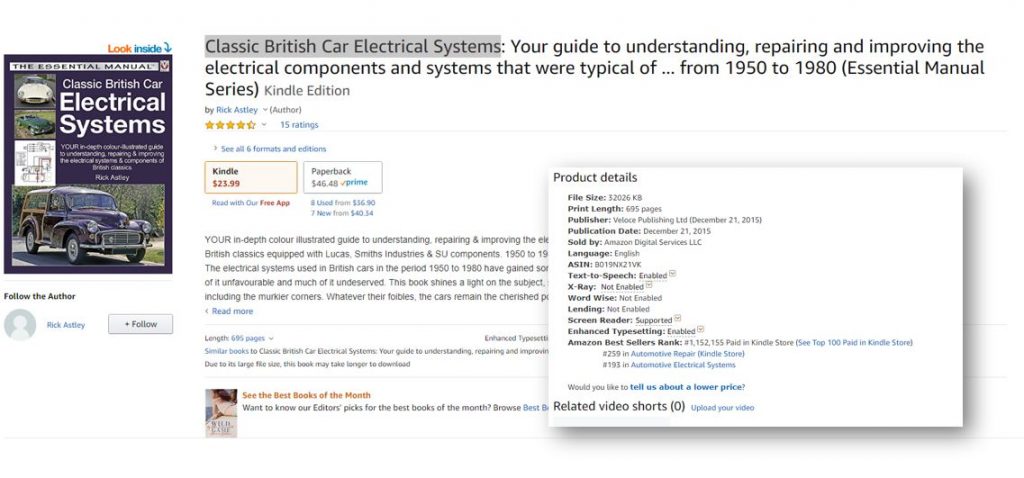 However, when it comes to fiction books – especially genre fiction, like romance – categories are incredibly powerful tools for getting your book in front of potential readers; so it’s a step that you can’t afford not to get right.
However, when it comes to fiction books – especially genre fiction, like romance – categories are incredibly powerful tools for getting your book in front of potential readers; so it’s a step that you can’t afford not to get right.
Categories in Fiction
As I mentioned above, categories are most effective in the fiction side of self-publishing, because potential readers literally use categories like aisles in a book store. Fans of a particular genre will stroll through the digital bookshelves to see what’s new and grabs their attention.
One of the ways they do this is to simply click on the category tab for the type of books they like – and they’ll automatically be presented with the Top 100 books in that category. This is why getting your books Sales Rank as low as possible is so valuable – as once you crack that Top 100, readers will be presented with your book front-and-center and sales can explode.
Of course, getting that superior Sales Rank isn’t easy – if it was, everybody would be doing it. It’s rare that any book gets a good Sales Rank organically – especially these days – so to be featured in the Top 100 of the Amazon bookstore normally requires a sophisticated marketing and advertising strategy that can threaten to cost more than you make in book sales and page reads.
Fear not, however – because just like nobody goes looking through the Automotive Repair category for books on British Car Electrical Systems, very few people looking for a good read will go straight to the overall Top 100 best-selling books on Amazon. The Top 100 is a giant bucket which encompasses the best-selling of all books – and somebody looking for the next romance book on their reading list won’t want to trawl through Diary of a Wimpy Kid: Wrecking Ball or Crime in Progress: Inside the Investigation of Donald Trump to get there.
Instead, they’ll venture down the virtual aisle of the digital bookstore to the books they like to read – like the overall category of romance.
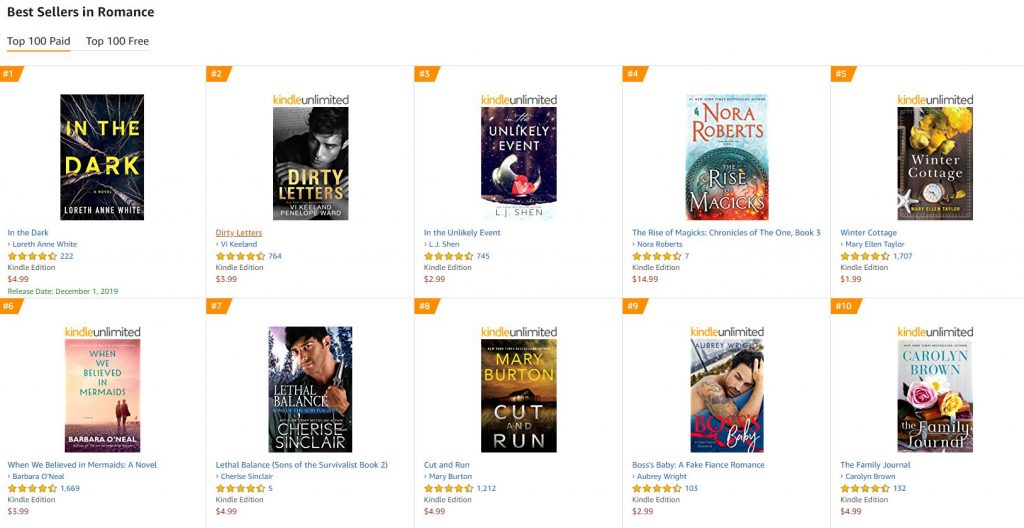
If you’re a fan of romance, you’ve immediately cut through a lot of the chafe by clicking on the romance category – but it’s still an astonishingly big bucket (which is unsurprising, as romance accounts for more than 50% of all digital book sales according to BookRiot.) Even within the Top 10, we’ve got slow and intense family drama, exciting action suspense, and steamy ‘fake fiance’ fiction – and all of them are romance!
This is why romance readers actually tend to go further down the rabbit hole, and click on nested sub categories depending on the type of romance that they prefer. For example, Lethal Balance by USA Today bestselling author Cherise Sinclair is #4 in Contemporary Romance Fiction.
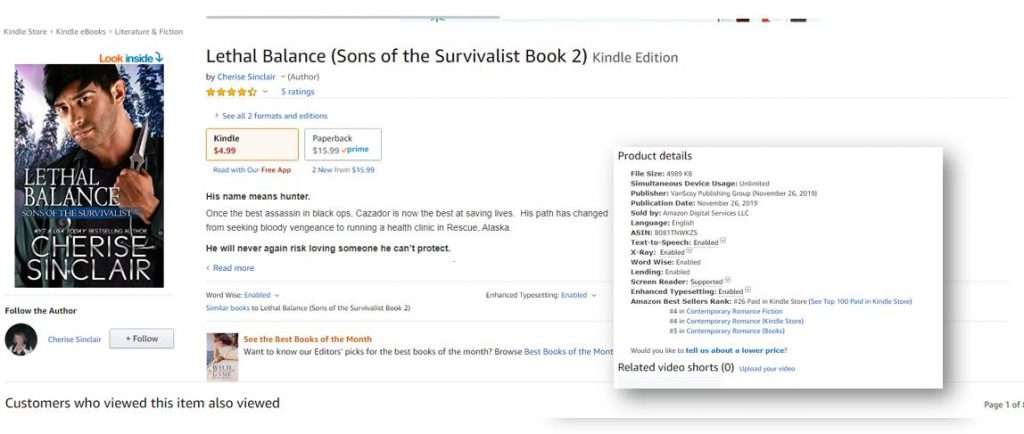
Fans of Cherise’s books probably like contemporary romance books, and so will probably go straight to this category to look for new reading material, rather than Top 100 overall, or even the Top 100 of Romance. This way, they know what they’re getting – romance books, set in the modern day, with a certain amount of social proof so they know they’re going to be a good read. This is where the value of being ranked in the Top 100 of a category comes in!
But here’s the value to you – Lethal Balance might currently be #26 overall in the Amazon Sales Rank (making it the current 26th bestselling book on the entire website) but it’s #4 in Contemporary Romance, meaning that it’s right there the moment you click on that category to browse the top 100.
That position is the best advertising money can’t buy. I mean, while the book probably got there through targeted advertising – sales on Facebook or Advertising on Amazon – you can’t ‘buy’ a spot on the Top 100 list (well, maybe some people can…) and you have to earn it through book sales.
It’s just a lot easier to earn that position in a smaller category – and, arguably, that’s where your potential readers are browsing, anyway.
Let me give you an example. In Amazon’s Top 100, the #50 spot is currently taken by The Bad Seed, which is ranked #50 in the entire store (meaning it sells around 1,758 copies in a single day to get there.)
To get equal exposure on the Contemporary Romance Fiction category, the current #50 book (Maid, by Jenna Rose) only needed to achieve #1,023 in the overall ranks – meaning it only had to sell 113 books in a single day.)
Of course, to many self published authors that still sounds like a LOT – but assuming you have an advertising strategy in place, it’s the difference between investing hundreds of dollars and thousands of dollars; and your position in the Top 100 of a specific category will probably end up working harder for you than being #50 in the overall Kindle Bookstore (because people browsing Contemporary Romance Fiction want to buy that type of book.)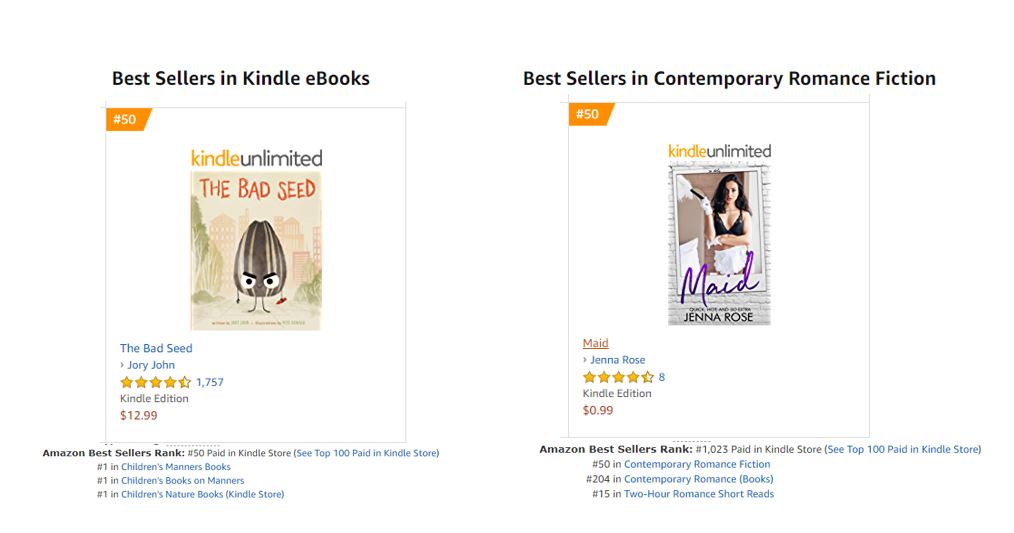
What does this mean to you?
For an independent author, this means getting your book ranked highly in the right category can have an explosive impact on your book sales. It also means that getting your book featured in the wrong category can tank those sales – as your book might be highly ranked in a specific category, but if that’s not where your potential readers are, it won’t help your sales!
There’s a very simply formula at work – and it looks like this:
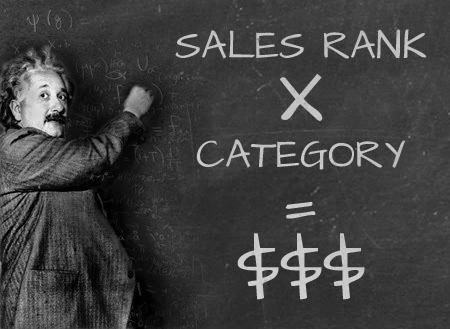
If you can get your book featured in the RIGHT category, it will multiply the effectiveness of all your advertising and marketing efforts – and could be the difference between your book being a hit, or a flop. Categories are incredibly important – and remember, they are more specific than you could possibly imagine.
Case in point? It takes an estimated 1,758 sales a day for The Bad Seed to be #50 in the overall ranks of Amazon. It takes just 113 sales for Maid to have that equal ranking in Contemporary Romance Fiction. But head off to something like Best Sellers in Ancient World Historical Romance (the same category as the wildly popular Outlander series) and the #50 spot is taken by a book that’s 15,028 in the ranks – selling an estimated 14 books a day to earn that spot.
Now, there’s a law of diminishing returns on this – as in, the Sales Rank of the books ranked in the more obscure categories demonstrate that not that many people are shopping there – but if you can find the sweet spot for your book, in between category and Sales Rank, you can really see an impact on your sales.
So, how do you put your book in the right categories?
Well, there are a TON of articles out there about how to ‘game’ your categories on Amazon – but I generally recommend you steer clear of anything to do with trying to manipulate or exploit the workings of Amazon’s sales systems, because all it takes is one minor algorithm change from them to totally screw up your plans.
Instead, the most important thing is to pick the right category for your books, write books that are appropriate for that category, and then make sure that’s where they get listed.
There are four major factors that decide where your books end up falling in Amazon’s category system – three of which you have influence over, and one that you don’t.
When you publish your book in Kindle Direct Publishing, your Title, Categories, and your Keywords will be the largest deciding factors in which categories your book ends up in.
Your book title will factor in if it has a specific set of keywords in it – like this book has ‘mafia’ and ‘billionaire’ in the title, and so understandably got placed in both the Mafia and Billionaire Romance section.
Next, when you publish your book, you can select up to two Categories for it to be listed in – and while you can drill down to a certain extent (buckets like “Contemporary Romance” or “Romantic Suspense”) you are limited in the specificity here. For example, you can’t get into the ‘billionaire romance’ category this way. These are more general buckets – and I recommend picking two that are appropriate, but broad (like if your romance is set in the modern day, Contemporary Romance makes sense.)
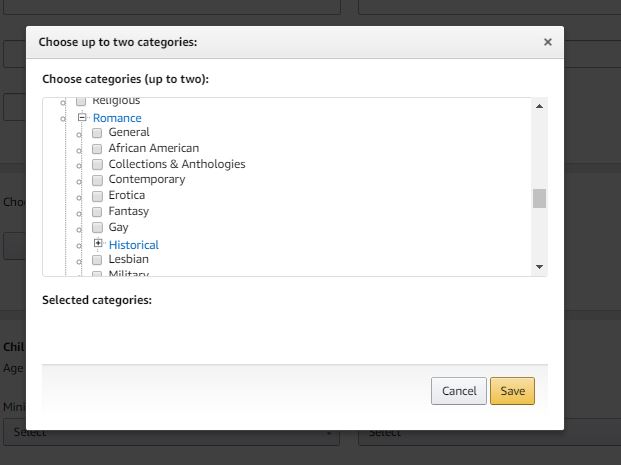
It’s the Keywords section which gives you the real power – and it’s one of the least-understood nuances of self-publishing.
The keywords you fill out when you are setting up your book are different than the keywords you use when Advertising on Amazon. These keywords provide Amazon with the behind-the-scenes clues about where to place your book. You’ve seen this section in KDP’s Bookshelf – it asks you to insert “7 search keywords.”

However, it’s misleading to call them simply “search keywords.” These keywords definitely do have an impact on search – so, if somebody types in a specific string of keywords into Amazon’s search bar, and they’re the same keywords that appear in your book’s keywords section, it’s entirely possible your book will be one of the ones ranked in the search results (after some Sponsored Content, of course.)
But what isn’t as obvious is that these keywords can also help you get featured in different categories.
In fact, Amazon use this information to allow you to specify those categories – by including specific words in these keyword boxes. For romance, for example, you can get your book into sub-categories by including words like these:
So, if you wanted your book featured in the Western Romance category, for example, you need to include the keyword “cowboys” in your Keyword section. For example, the current #49 book in that category is Her Second Chance Cowboy Billionaire Christmas Secret by Hanna Hart is in the Top 100 of three different categories, despite only selling about 71 books per day.

By being strategic about your use of keywords and categories, you can massively impact the visibility of your book.
Leveraging Keywords
Amazon used to list the keywords that would place you in specific categories on their help pages, but they seem to have recently removed those pages and replaced them with a more generic explanation, but it’s still worth giving that a read. What they don’t tell you, however, is that you’re not limited to seven individual keywords. Each of those 7 keyword boxes has a 50 character limit, and you can stuff those boxes with appropriate keywords. In fact, Hidden Gems has a free tool available to help you do just that.
Also, if you ever find yourself wanting or needing to change the categories your book appears under, you can give Amazon a prompt by scrolling down to the bottom of your KDP Dashboard page and clicking on the Contact link. Then email them with the ASIN of your book, and they may (or may not) fix that for you.
While none of this information is groundbreaking – and it won’t turn a flop into a bestseller – it’s something that a lot of people still don’t understand; and it’s powerful.
While getting the categories right can’t turn a flop into a hit, it will amplify any success you do have – so a book that finds traction and earns sales might become a lot more successful if it’s launched with a category strategy behind it.
Final Word
This is a pretty comprehensive overview – but if you do find yourself with any questions, remember that we offer independent authors 1-on-1 consulting that can help you get specific, individualized answers to thorny questions like the topic of Categories.


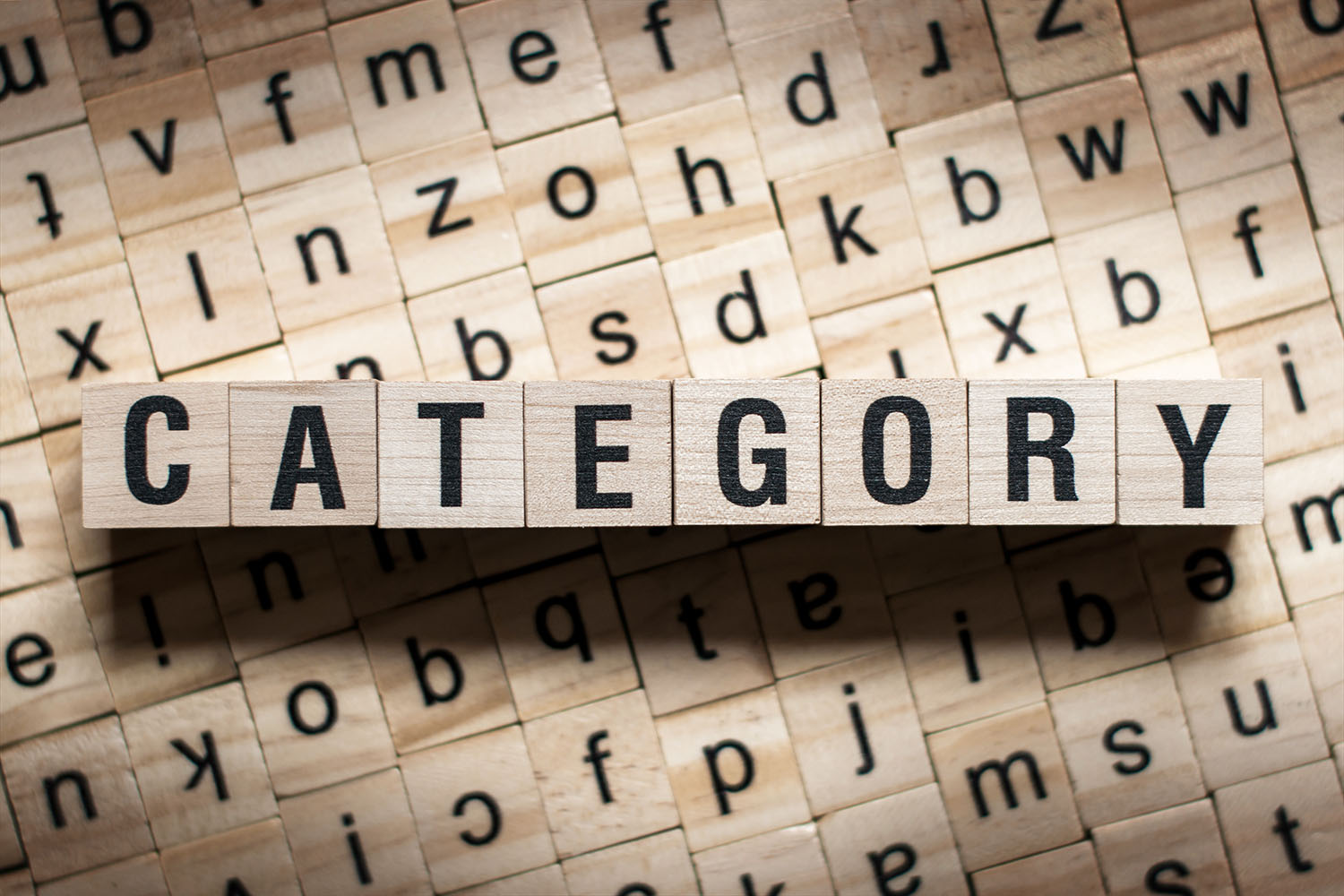

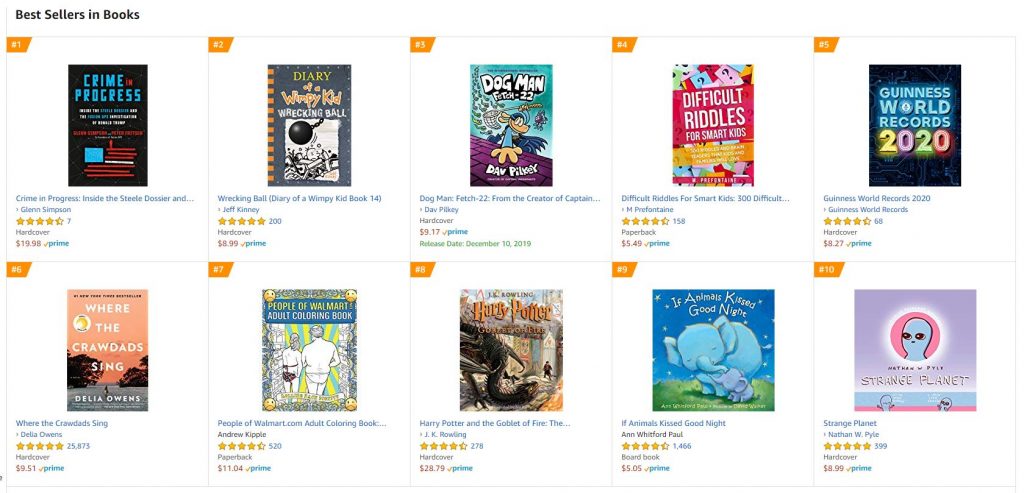
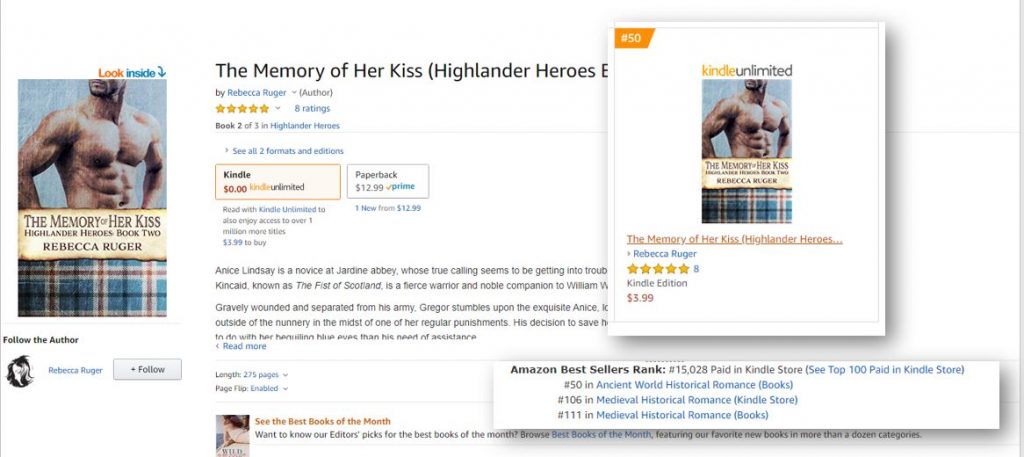
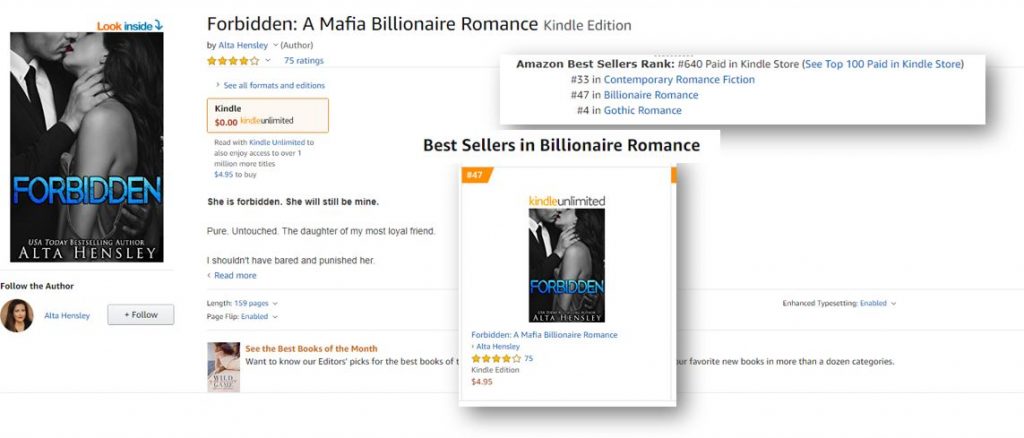
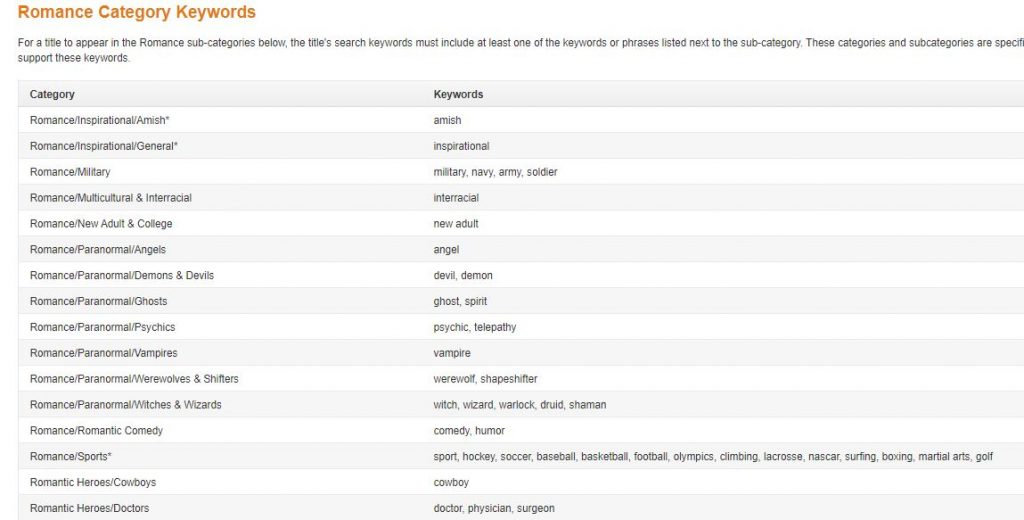

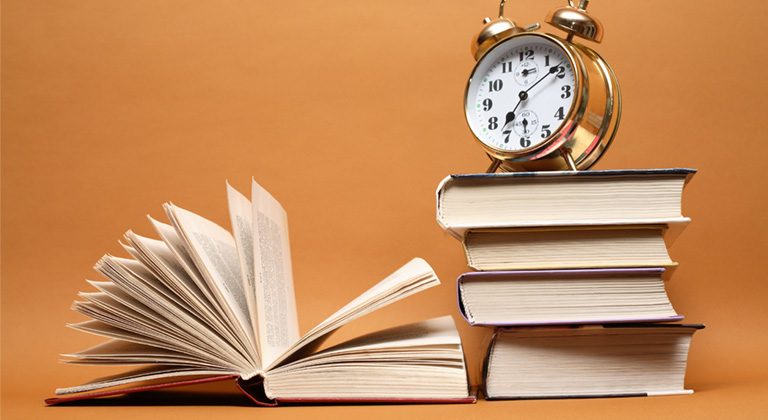






Thanks for this article. It’s loaded with useful specifics I needed to know. Really appreciate your efforts. I had no idea how important those subcategories could be.